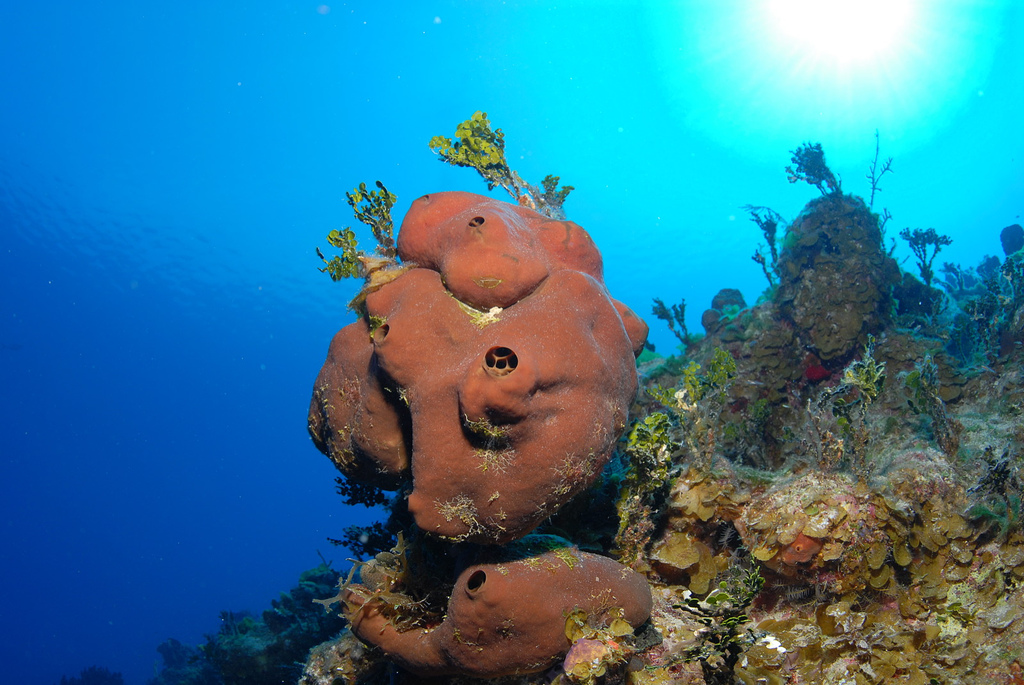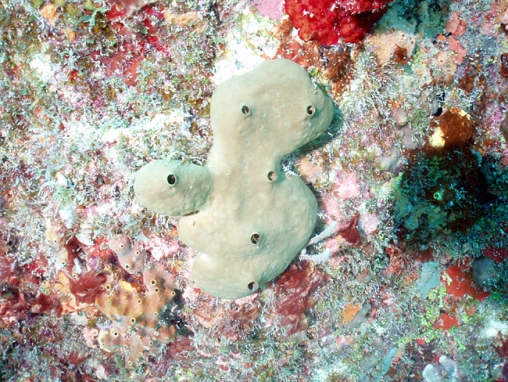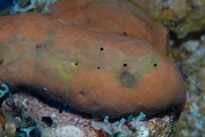Interactions
It is possible for
Plakortis simplex to exhibit a mutualist
relationship with photosynthetic bacteria.
In this symbiosis, P. simplex
essentially provides protection for the
photosynthetic bacteria while receiving
nutrients provided by means of
photosynthesis. Other than
microscopic bacteria exhibiting a parasitic
relationship by feeding on the cells of P.
simplex, it is not
likely to be consumed by other organisms
because of its undesirable taste. This
undesirable taste is common in organisms
belonging to the phylum Porifera.
However, it has been discovered that few
species of fish and gastropods will feed on
them.
Other than
microscopic bacteria exhibiting a parasitic
relationship by feeding on the cells of P.
simplex, it is not
likely to be consumed by other organisms
because of its undesirable taste. This
undesirable taste is common in organisms
belonging to the phylum Porifera.
However, it has been discovered that few
species of fish and gastropods will feed on
them.
It has been discovered
that Plakortis simplex is linked to
antimalarial compounds.
Malaria is a parasitic disease caused by
protists of the genus
Plasmodium. Plasmodium uses two
hosts to complete its life cycle.
It first infects a species of
Anopheles
mosquitoes.
The Anopheles mosquito then
transmits Plasmodium to humans by
means of biting the skin.
Malaria is a very deadly disease which
causes at least one million deaths per year.
Plasmodium uses two
hosts to complete its life cycle.
It first infects a species of
Anopheles
mosquitoes.
The Anopheles mosquito then
transmits Plasmodium to humans by
means of biting the skin.
Malaria is a very deadly disease which
causes at least one million deaths per year.
Plakortis simplex was found to be loaded in supply of immunosuppressive glycolipids. One unique secondary metabolite isolated from P. simplex is a peroxide polyketide called plakortin. Plakortin contains antimalarial activity and is the most plentiful secondary metabolite produced by the sponge.
For information on another antimalarial promising organism check out Piper nigrum.
To view pictures of P. simplex click here.
